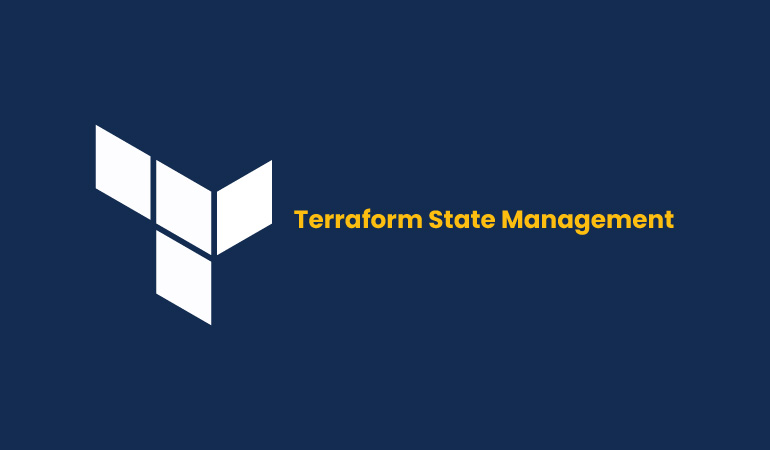Terraform State Management: Top Challenges and Solutions

Terraform continues to be a pivotal tool used for infrastructure management in the world of IaC or Infrastructure as Code. From being a primary force that defines and provisions infrastructure to its management through declarative configuration files, Terraform finds solutions for numerous challenges. State file happens to be a core and vital component of Terraform, which keeps track of the history of all the resources being managed under Terraform. Undoubtedly, a state file is of immense benefit and value, but it comes with many challenges that make it hard to function properly. Let’s get into the depth of these challenges and figure out solutions to address them all in cloud solutions.
Getting to Understand Terraform State
It is critical to understand the basics of the Terraform state before getting into the problems, their severity, frequency, and solutions. The state file is a JSON file that stores or collects all the infrastructure related information and its management by Terraform. It holds quite a significance for Terraform because it maps out real-world resources to the configuration, helps to track metadata, and consequently improves performance.
Common Problems with Terraform State Management
-
State File Corruption
Problem
A common problem with state files is file corruption, which could be due to several reasons. Often, the primary reasons lurking behind state file corruption are network issues during the state update process, manual modifications, and software bugs. All three of these can corrupt a state file and make your infrastructure management harder, ineffective, and inefficient. As a result, all the Terraform Infrastructure as Code tool commands fail miserably and produce incorrect results.
Solution
- Remote State Storage: You can put to use remote backends like AWS S3, Azure Blob Storage, or Google Cloud Storage. Such backend services tend to offer durability and are generally available when needed, so it reduces the risk of state file corruption.
- State Backups: You must also enable versioning on state storage to keep backups of previous state files. This allows recovery from corruption by reverting to an original or well-known state.
- State Validation: Use Terraform validate and Terraform plan if you want to regularly check and maintain the integrity of your state file. This step is crucial for state validation.
-
State File Conflicts
Problem
The risk of state file conflicts increases as the number of team members working on the same Terraform configuration increases. This happens primarily due to performing simultaneous operations that modify the state file, which could lead to inconsistencies or lost changes.
Solution
- State Locking: As a solution, you can use state locking mechanisms offered by remote backends. State locking mechanisms will guarantee that only one operation can modify the state file at a given time. This will prevent conflicts from occurring in the first place. For example, AWS S3 with DynamoDB for state locking.
terraform {
backend “s3” {
bucket = “my-terraform-state”
key = “path/to/my/key”
region = “us-west-2”
dynamodb_table = “terraform-lock”
}
}
- Sequential Changes: Another tip is to encourage and allow team members to apply changes sequentially which will also give way to smooth communication will get rid of simultaneous modifications.
- Automated Pipelines: You can implement CI/CD pipelines to manage Terraform deployments. This will centralize state changes and consequently lessen the probability of conflicts.
-
State File Security
Problem
State file security is often at risk because it carries sensitive information, such as resource configurations and credentials. If it is not properly secured, managed, or handled, it can lead to a major security breach, and the information can be exposed to unauthorized users.
Solution
- Encryption: You must encrypt the state file for this purpose at rest using backend-specific encryption mechanisms. For example, you can also allow server-side encryption on AWS S3.
terraform {
backend “s3” {
bucket = “my-terraform-state”
key = “path/to/my/key”
region = “us-west-2”
encrypt = true
}
}
- Access Controls: Implement stricter policies and access controls to your state file. Put IAM policies, Azure RBAC, or Google IAM protocols to restrict and limit access to authorized users only.
- Sensitive Data Masking: With the help of the sensitive attribute in Terraform, you can avoid and prevent sensitive data leakage and exposure in the output.
output “db_password” {
value = aws_db_instance.default.password
sensitive = true
}
-
Handling Large State Files
Problem
With the growing infrastructure and its needs, the state file also expands or grows. These large state files tend to slow down the system and Terraform operations, rendering them inefficient and ineffective.
Solution
- State File Partitioning: You can try splitting the infrastructure into multiple Terraform configurations to manage them independently. This portioning strategy decreases the size of individual state files.
- Modules and Workspaces: You can also use Terraform modules and workspaces for managing different environments and components individually.
terraform {
backend “s3” {
bucket = “my-terraform-state”
key = “prod/terraform.tfstate”
region = “us-west-2”
}
}
terraform {
backend “s3” {
bucket = “my-terraform-state”
key = “dev/terraform.tfstate”
region = “us-west-2”
}
}
- Selective State Retrieval: Terraform state commands help you target specific resources and minimize the amount or volume of state data loaded during operations.
Best Practices for Terraform State Management
With the help of certain tried and tested practices, you can mitigate these common problems:
- Regularly Backup State: To prevent potential data losses, make sure your state file is regularly backed up. You can achieve this using automated tools and scripts that create backups after each Terraform operation.
- Use Consistent Naming Conventions: Use consistent naming conventions for your state files and backend configurations. This will simplify management.
- Automate State Management: Integrate Terraform with your CI/CD pipeline to automate state management tasks, ensuring consistency and reducing the likelihood of manual errors.
- Monitor State Changes: Implement monitoring and alerting for state file changes. Use tools like AWS CloudWatch, Azure Monitor, or Google Cloud Monitoring to track changes and receive alerts on suspicious activities.
- Documentation and Training: Educate your team on the importance of state management and provide documentation on best practices and procedures to follow.
Conclusion
In simple words, Terraform state management could be the defining aspect of Terraform if only it is put to smart and effective use. Once you have understood the key problems revolving around state management, it will get easier for you to implement the solutions discussed. These solutions will guarantee robust and reliable infrastructure management. With proper state management and best practices, you can make Terraform your ally in your infrastructure as a code journey.
Do you need any further help regarding Terraform? Feel free to reach out to us at [email protected].



